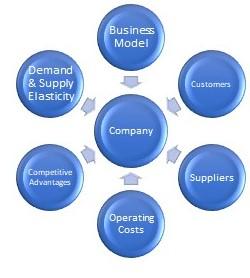Global Return Asset Management update for the month of May 2019, discussing the navigation through the market’s volatility and identifying risk variables.
Dear Friends and Partners,
Earlier this week when we sent our April results we promised to send a more expansive discussion on how we’re navigating the market’s volatility.
Q1 hedge fund letters, conference, scoops etc
The S&P 500 and the Dow are nearing their worst May performance in nearly 50 years. Conversely, Global Return's performance month-to-date reflects a portfolio that's well-positioned to weather this volatility. Below is an explanation of how we've accomplished this.
How do you manage the unmanageable?
I don’t believe volatility is risk. Paradoxically, our portfolio consistently exhibits less volatility than our peer groups and major indexes. Nonetheless, how do we do we achieve this?
We hedge with put options and use our cash wisely. But most importantly, it's how we analyze companies, and this begins with what I describe as “breaking apart a company into its risk variables”.
Identifying Risk in a Company
A business is a collection of risk variables. These variables include (but are not limited to) the business model, customers, suppliers, operating costs, competitive advantages, demand/supply elasticity, etc. Importantly, risk variables directly impact a company’s profitability and thus its valuation.
At Global Return, we attempt to identify each risk variable of a prospective investment. Once the risks are identified, we then determine how and why these risks could change, and how these changes could impact the company’s valuation.
We believe this is the key to minimizing losses and increasing returns – understanding the sources of risk within our assets’ and how these risks could impact valuations.
Unfortunately, risk isn't a line-item on a balance sheet; otherwise, no one would ever lose money investing. To understand a company's risk variables, we must first understand risk.
Types of Risk
Risk that reduces a company’s value is uncompensated risk. The reason for this is obvious – an investor assumes the risks of an asset when buying it, yet if the asset loses value because of the risks, then the investor has bought uncompensated risk.
Conversely, risk that increases a company’s value is compensated risk. Again, the reason is obvious – companies take risks to generate returns and if they’re successful the risk is compensated.
Finally, risk can be fixed or fluctuating. For example, here are several risk variables of a bricks-and-mortar retail company:
- Real estate leases
- Industry capacity
- Price competition
- Consumer trends
- Consumer spending
Real estate lease liabilities aren't likely to change without advanced notice; hence, they're a fixed risk. Conversely, consumer trends and price competition are regularly changing; this is what makes them fluctuating.
But identifying risk variables and then determining whether they're compensated or uncompensated and fixed or fluctuating is only half the challenge.
Here's why:
With a high-level of probability, can you determine which of the above-listed risks could change and how those changes would impact the company’s valuation?
The key to successfully answering this question is understanding the gargantuan difference between what’s "possible” and what’s "probable”.
It’s possible to quantify certain of these risks but not with a high degree of probability. Heck, even retailers are struggling to determine what consumers want and what they're willing to pay.
This is the other half of the challenge: accurately assessing the possibilities and probabilities of an investment.
When we're unable to quantify certain risks with a high-degree of probability, then we're unable to determine the prospective investment’s risk/reward ratio, so we pass on the opportunity.
Finally, we approach fluctuating risks with more caution because they have a higher probability of igniting unexpected risk. The investment community doesn't like unexpected risk and when it manifests assets are revalued lower – this is what we call “volatility”.
What's the Solution?
Understanding the myriad of risks embedded in a prospective investment is critical to achieving superior risk-adjusted returns. To do this, requires determining, with a high degree of probability, whether the current share price of the company offers a sufficient return given its risks.
Simply put, investing is the act of purchasing risk. Therefore, security analysis is risk analysis, the two are the same. Obviously, our goal is to invest in companies with compensated risk that offer a high probability of achieving the risk/reward ratio we seek. We believe our approach to risk analysis is one of the hallmarks that has contributed to our success, and it has enabled us to consistently deliver above-industry returns with below-industry volatility.
Sincerely,
Elliot Trexler
www.GlobalReturnAM.com
This article first appeared on ValueWalk Premium







